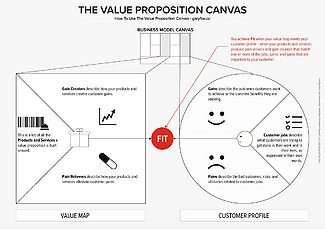Construction of the new Storstroem Bridge
| Information on the new Storstroem Bridge |
| Construction price: appx. 4.1 billion DKK |
| Construction started: 2018 |
| Construction finished: 2022/2023 |
| Lenght of the Bridge: appx. 4 km |
| Clearance below: avg. 26 meters |
| Max speed cars: 80 km/h |
| Max speed trains: 200 km/h |
| Carrys: 2 train tracks, 2 road lanes, bicycle path & sidewalk |
| Main stakeholder: Ministry of Transportation and Housing, |
| BaneDanmark, and The Danish Road Directorate |
Created by: Johan Kjærsgaard Knudsen s164316, Kristoffer Sundberg Ipsen s164293, Sebastian Skaarup Lind s164299, Jonathan Friis Schouenborg s162692, Narwan Kabir Noori s164019, and Casper Solvang Andersen s164279
The Danish Road Directorate is currently the builder of the new Storstroem Bridge, also known as Storstrømsbroen. The construction of a new bridge and demolition of the old bridge is due to the construction of the tunnel across Feharnbelt which will result in an increased amount of mainly cargo trains using the railroad from Ringsted to Germany. The construction of the new Storstroem Bridge is only a part of the renovation of the aforementioned railroads done by BaneDanmark. The choice of building a new bridge instead of renovation the old bridge is due to lower socio-economic expenses that would otherwise have resulted in a shutdown of traffic on the bridge in serval years.
Contents |
Collection of Tools
Critical Chain Project Management (CCPM)
Critical Chain Project Management (CCPM) is a method of planning, execution and managing projects. CCPM depends on three core principles: relative global urgency, clear stable priorities, and relay race culture. Using these core principles, also found in the critical chain approach, and focusing on the resources and not the different tasks CCPM should be able to speed up projects by 30% and increase the predictability up to around 90%. To conclude the main principle with CCPM is to remove the risk of delays, speed up projects and improve the predictability and instead have a time buffer that can be used. [1]
Change Orders (CO)
Change orders (CO) are a general change from the original plan, e.g. in the project plan and the planned design, which are a common issue within the construction industry and usually result in delays and increased expenditures in the execution of the project. It is normal to see a 10-15% increase in the budget when COs not are included in the original budget. Thus, it is desirable to reduce the total amount of COs within a project. CO will always be cheaper when ordering it early in the project compared to late in the project due to neglection of redoing things.
Common Parameters Causing CO
- Bad Soil
- Material change
- Collision of structures
- Wrongly estimation of budget
- Quality does not live up to the expectations stated in the contract
- Bad communication and confusion
Reduce the Amount of CO
Building Information Modelling (BIM) can be a thing to reduce the amount of CO since it uses 3D drawing models (for instance with Solibri), that can compare structural models with the architect’s model. This will remove the uncertainty regarding the collision of structures within the project. Subsequently, this also gives a better cost estimation due to all component’s inclusion in the original plan. As a matter of integrating virtual reality, the property developer can visualize the building beforehand. Hence, the quality that does not live up to the expectation will be reduced. Another to reduce the amount of CO is to include the end-users through questionnaires or focus groups.
Ways to Manage CO
Two types of CO exist namely, a required and an elective. The required is a compulsory change that has to be made due to law requirements and that safety standards are not meet. The elective one is mandatory and is only due to the improvement of the existing project. When one of the above COs is to be executed, this should be included in the contracts with respect to the cost, which can be done in three ways. First, the unit price, which was already agreed upon in the beginning, second the lump sum, which is a detailed described of the new work scop and thereby a fixed cost and last the time & materials, which reflect the cost associated with the actual cost and material overrun for each day. The last solution is usually used, when the lump sum is hard to define. Subsequently, one of the following forms can be used between contractor and owner:
Deviation form: when extra work is added to the original scope from the contractor, which can be rejected or accepted by the owner
Initiator change order request: Forecasted extra work to do the change
Change order technical justification: Document of reliability which states the extra work needed.
[2]
Changes Within the Project
Triple Constraint Theory
Management Reserves Vs. Contingency Reserves
Bibliography
- ↑ http://wiki.doing-projects.org/index.php/Critical_chain_project_management_(CCPM) visited 03-03-2020
- ↑ http://wiki.doing-projects.org/index.php/Change_order visited 03-03-2020
